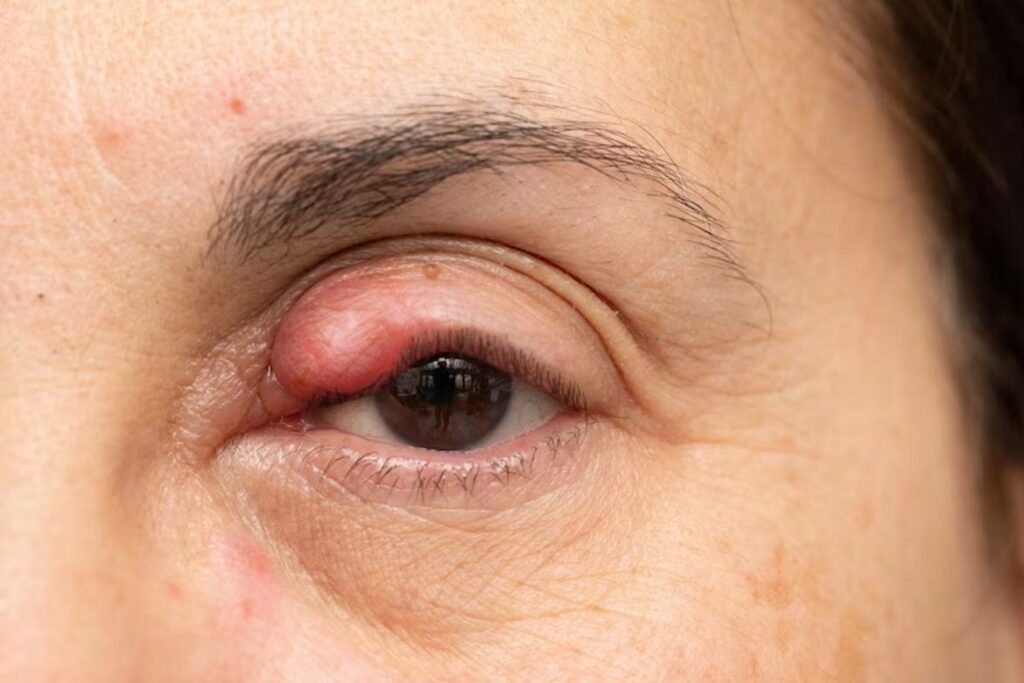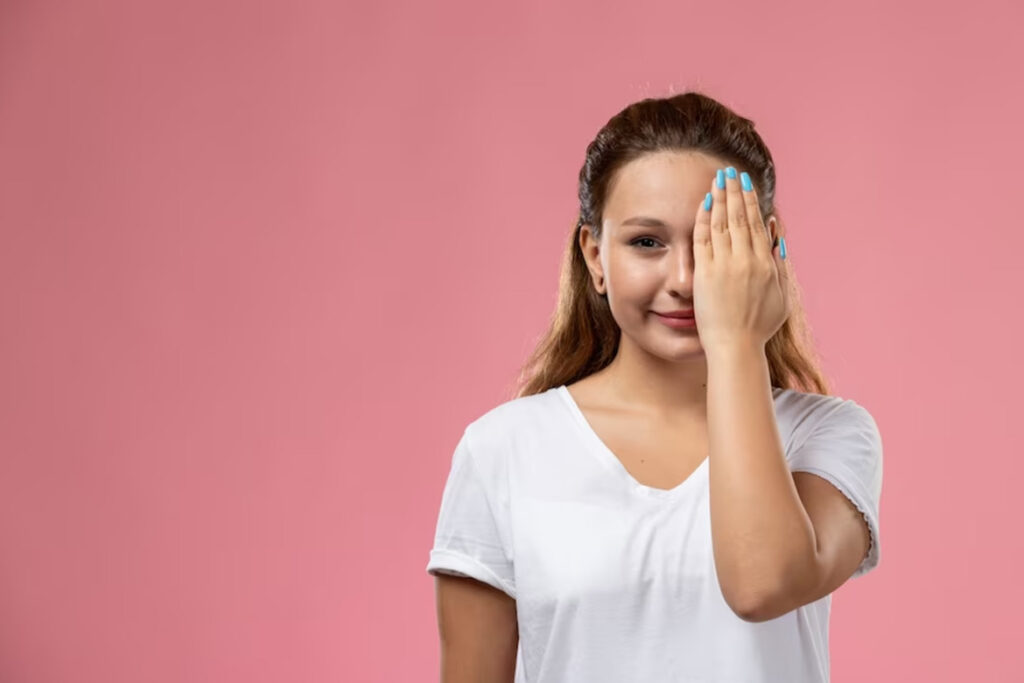A stye is an eyelid lump brought on by a bacterial infection. It is more likely to happen if you have certain medical conditions, like diabetes and rosacea, or certain habits, like rubbing your eyes.
Styes can be bothersome and uncomfortable. You can still have styes even if you take good care of eyes. A bacterial infection of the sebaceous glands or hair follicles on the eyelids results in a stye. Dead skin cells and other debris can clog these glands and hair follicles. Infections can be brought on by bacteria. Hordeolums are a painful, swollen lump that result from this.
What is a stye?
A stye is a reddish bump on the outer edge of the eyelid. Filled with pus and inflammatory cells that are produced when a clogged gland or follicle becomes infected. Sensitive to touch and very painful. Doctors call a stye a hordeolum.
Types of Stye
A stye may be located on the outside (outside) or inside (inner) side of the eyelid.
Outer stye: Far more common than the inner stye, most outer stye originate in the follicle of the eyelash. It can also start in the sebaceous glands. They are located on the outer edge of the eyelid.
Internal stye: Most of these start in the sebaceous glands (meibomian glands) within the eyelid tissue (meibomian glands). A stye tends to be more painful than an outer stye because it puts pressure on the eye as it grows.
Symptoms of a stye
Like a pimple, the pus produced by a wind tunnel infection is usually sharp. It creates a beige or yellowish spot on top of the stye.
Other symptoms of a stye include
- Eyelid swelling
- Yellowish discharge
- Sensitivity to light (photophobia)
- Feeling like there’s something in the eye
- Eyelid tenderness
- A gritty feeling in the eye
- Watery eye
- A crust that forms on the edge of the eyelid
- Eyelid redness
What Leads to Styes?

Styes are typically brought on by a blocked gland or an inflammation brought on by staph bacteria (Staphylococcus aureus). While most internal styes are caused by a blockage in the oil-producing, meibomian glands in the eyelid, external styes on the edge of the eyelid frequently result from blockage of an eyelid gland, occasionally via a hair follicle. Some other causes include:
- Previously had a stye
- Wearing used contact lenses
- Wear eye makeup that is out-of-date or tainted
- Avoid cleaning around the eyes
- Have additional illnesses like diabetes, rosacea (a chronic skin condition that causes redness, pimples, and broken blood vessels in the face), blepharitis (inflammation of the eyelids), seborrheic dermatitis (a chronic form of eczema that causes dandruff or a rash), or rosacea.
- Living in a dry environment and taking specific medications, like corticosteroids, can both increase your risk.
Some Do’s to alleviate Stye pain
- Warm compresses:
Warm compresses relieve pain, reduce inflammation, help drain pus from a stye, and remove inflammation. To prepare a warm compress, soak the compress in warm water or clean the cloth, then remove excess liquid and place it on the stye area for 5-10 minutes. It is the safest and easiest way to remove a stye. So if you don’t have the time or energy to combine other remedies, you can try this. Warm water will help reduce swelling and stye should heal within days.
- Warm tea bag Use:
Warm tea bags are another thing that can be used as a compressor. Perfect for this purpose. It can reduce swelling and has some antibacterial properties. First, place the tea bags in a pot of boiling water and steep for about 1 minute. Let the tea bag cool and then use it as a compressor for 5-10 minutes. Use this technique for one or both eyes, but be sure to use a separate tea bag for each.
- Use Aloe Vera:
You can also gently massage aloe vera around your eyelids to help with drainage. Do not try to pop the stye directly. Instead, you should gently massage the area near the stye to help loosen it and release the infected material naturally. Prevents styes from forming in the eyes. Baby shampoo is gentle and non-irritating. Mix a small amount with water and clean your eyelids with a cotton swab. This can be done every other day.
- Use Saline:
Saline also has antifungal, antibacterial, and antibacterial properties that are beneficial in treating many infections and styes. Treating pain is preferred over inflammation because stye can cause insomnia. In such cases, saline is surprisingly effective. The warmth of saline soothes irritating eye styes. It relieves not only pain but also swelling.
Here’s what you shouldn’t do

Read more: How monsoon is harmful to our eyes? Tips to protect
- It’s important not to bruise or pop a stye.
- We recommend not wearing contact lenses while you have a stye.
- Do not share personal items such as towels and washcloths with others as they may spread infection.
- Do not wear eye makeup while you have a stye. It is even more irritating and causes eye mucus.
Note- It is important to see a doctor if the stye does not improve after a few days of home care or if the pain increases. Your doctor may prescribe antibiotics or other treatments to clear the infection.
